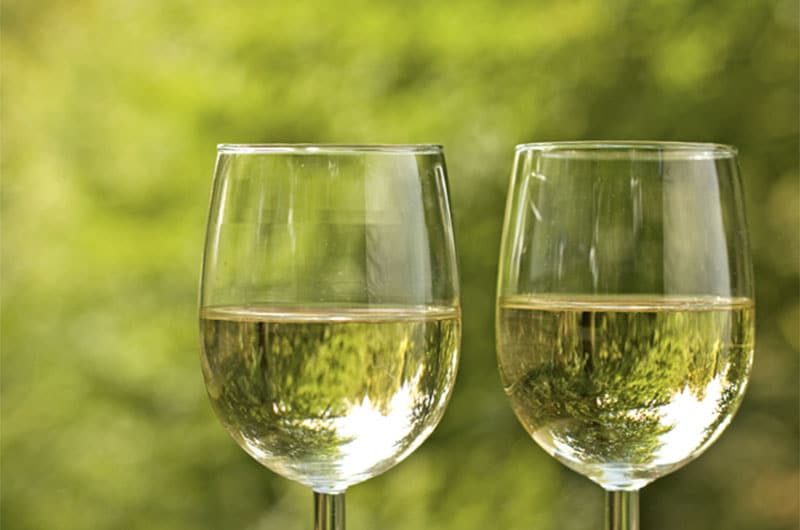~ by Jenny Benzie, Advanced Sommelier + Certified Wine Educator, Proprietress of Épernay Wine & Spirits ~
You have your ferry reservation booked to take the car back home. The kids are in line for one last ice cream at The Juice Bar before heading back to school. Items on the #Summer15 Nantucket Bucket List are rapidly being crossed off as you complete them. Let’s face it, though. Summer isn’t really over yet and you don’t want to leave this paradise. Those who live here yearround are starting to come out of summer stupor of 70-hour work weeks to enjoy the beauty and splendor of their island as the crowds thin. The weather is warm, and the water is the perfect temperature for an afternoon swim.
While there are many exotic and interesting white wines to enjoy, nothing quite equates as the best summer white wine like Sauvignon Blanc. It is perfect to sip while staring at the ocean, basking in the sun poolside, or just sitting in the backyard reading the latest Nancy Thayer book release.
What is Sauvignon Blanc?
The name translates to wild (sauvage) white (blanc). Sauvignon Blanc is a green-skinned white wine grape varietal, versus a gray-skinned Pinot Gris or yellow-skinned Chardonnay grape. This green hue translates into the wine being fresh and herbaceous, almost vegetal but not underripe. Think green bell pepper, fresh cut grass, or even jalapeño. Fruit flavors can range from lime and green apple in cooler climates to peach and guava in warmer zones. Overall, the wine is crisp, dry, and very refreshing.
Where is it grown?
Sauvignon Blanc is one of the most widely planted wine grapes in the world and because of this has a wide range of styles and flavors. In France, this grape produces the mineral-driven wines from Sancerre and Pouilly- Fumé in the Upper Loire Valley. The towns of Sancerre and Pouilly-sur-Loire (where Pouilly-Fumé comes from) are on opposite sides of the Loire River. Sancerre is grown on a predominately chalky limestone soil and has characteristics of white grapefruit and gooseberry. The “Fumé” is grown on Silex, which is a flinty soil that gives it an almost smoky gunflight aroma. This wine tends to be a little richer in style than its neighbor. Smaller appellations in this region that also grow Sauvignon Blanc are Menetou-Salon, a great value alternative to Sancerre, and the hard to find Quincy or Reuilly (not to be confused with Rully from Burgundy).
Traveling further south in France, Sauvignon Blanc is also found in the Bordeaux region. The maritime climate here produces a wine with little more weight and texture than those found in its northern counterparts. Less expensive wines from this region are light and fruity in style and typically made from 100% Sauvignon Blanc. Wines from the sub-regions of Entre-Deux-Mers, Graves or Pessac-Leognan are more serious wines that often are blended with the white grapes Semillon or Muscadelle. These white grapes add depth and character to the blend that make the final product cellar worthy as well.
Heading now to California, you will discover what is considered a New World style that is predominately fruit forward. This is in comparison to the mineral- or earth-driven Old World style. While Sauvignon Blanc is grown all over California, it is mostly found in Sonoma and Napa Counties. Fruit flavors from Napa will encompass white peach and cantaloupe with moderate acidity and alcohol. The slightly cooler climate of Sonoma will produce a wine with tart fruit flavors of green apple and honeydew and have moderate- high acidity, yet moderate alcohol. Often, these wines are also aged for a period of time in oak that offers length and texture to the finish of the wine. Sauvignon Blanc is extremely popular throughout New Zealand as another New World style. The most well-known and largest growing region of New Zealand is Marlborough, located on the northern tip of the South Island. These racy wines are high in acidity, pungent aromatics of asparagus, pink grapefruit, and fresh cut grass, along with moderate alcohol with no oak influence. You can also find variations in Martinborough, Nelson, Hawkes Bay, and Waipara Valley, just to name a handful of smaller regions from this country. More often than not, the wine is finished in a Stelvin (screwtop) closure for easy and immediate consumption.
A defining characteristic of Sauvignon Blanc and where it is grown is its acidity. This is a flavor component that makes your mouth water on the insides of your cheeks, almost like a waterfall. The more acidity, the more your mouth will salivate. Acidity is what helps a wine to pair so well with food. Hence, different styles of Sauvignon Blanc pair with a variety of dishes. Cooler climates like that of the Loire Valley will produce a wine with higher acidity, where a wine from a warmer climate like California will have moderate acidity.
Sauvignon Blanc should be served well chilled from your fridge, not cellar temperature. It is a perfect accompaniment with soft goat cheeses and also pairs well with most dishes, whether fish or poultry, that have any kind of herbs in their preparation. At your next Book Club gathering, have each member bring a brown bag bottle of Sauvignon Blanc so you can taste and figure out which style you like best!
RECOMMENDED WINES:
Domaine Daulney Sancerre, ‘Les Close de Chaudenay’ 2013
LaDoucette, Pouilly-Fumé 2013
Chateau La Garde, Pessac-Leognan 2011
Miner Sauvignon Blanc, Napa Valley 2013
Decoy Sauvignon Blanc, Sonoma County 2014
Nautilus Sauvignon Blanc, Marlborough 2014



